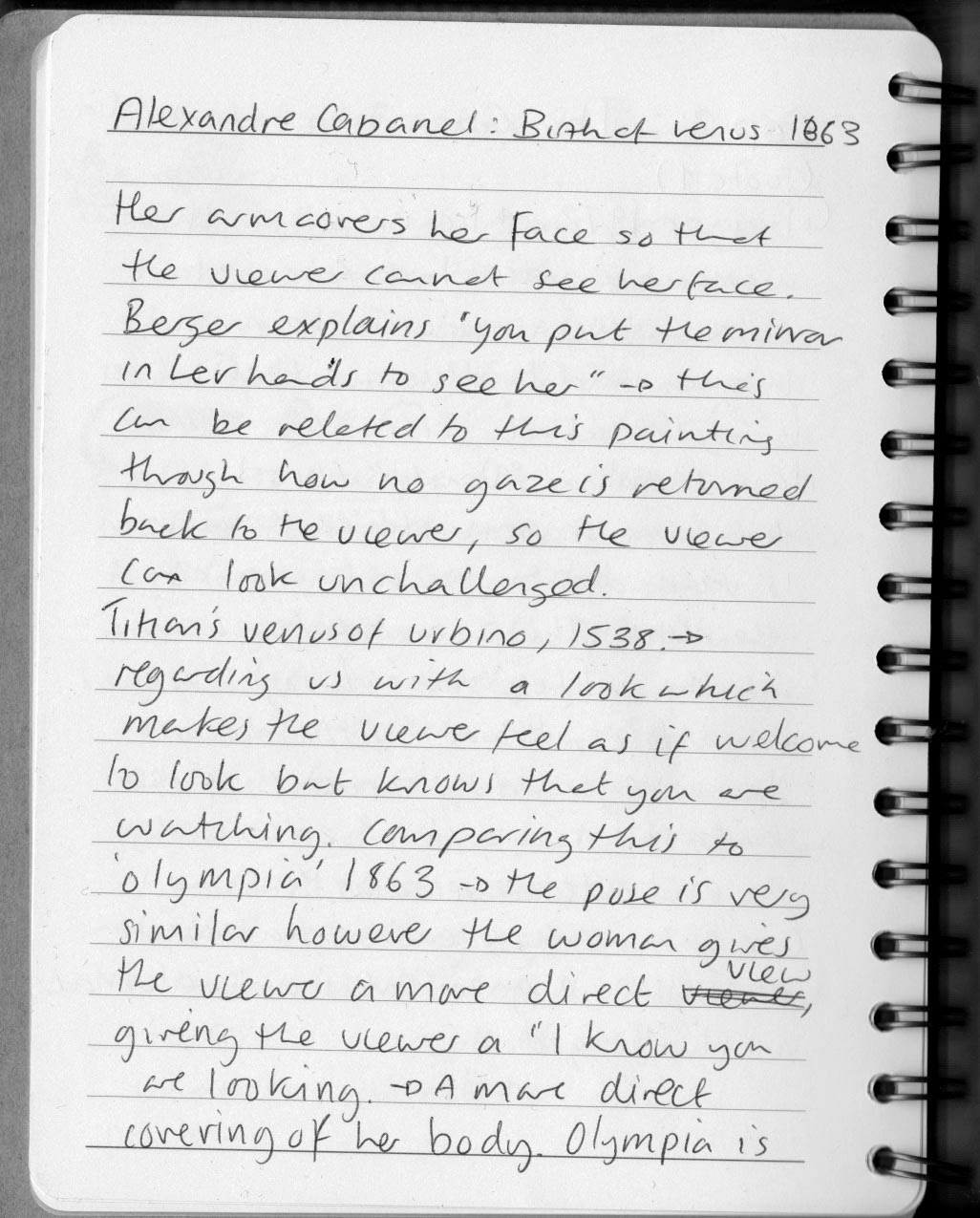Additional notes:
(Quote 1) - Page one of lecture notes
"According to usage and conventions which are at last being questioned but have by no means been overcome - men act and women appear. Men look at women. Women watch themselves being looked at"
Berger 1972
Berger 1972
Hans Memling "Vanity" (1485) was depicted within the Period of the Hammer of the Witches where women who would aid people in medical need, teaching one another medical tricks, where classed as witches. Anything in which was deemed suspicious or an act that was better of man where categorized as witches. Supposedly the Church believed that the witches would be cleansed with fire and reborn as a man. In addiction the Church believed that the Devil only affected women through the Biblical story of Adam and Eve, where Eve ate the forbidden fruit.
(https://www.marxists.org/subject/women/authors/ehrenreich-barbara/witches.htm)
(https://www.marxists.org/subject/women/authors/ehrenreich-barbara/witches.htm)
Guerrilla Girls (Page three of lecture notes) - founded in 1985 - are a group of women who began to make art in response to sexism, to reveal facts of discrimination of women to the masses, using humor to display information and provoke the public. To remain anonymous, the group assumed dead womens names and still wear gorilla masks when in public, concealing their true identities.
(http://www.guerrillagirls.com/admin/moreherstory.shtml)
I believe that the approach of the Guerrilla Girls towards sexism works well due to how they remain anonymous compared to women who are threatened via social media due to making their stand clear against sexism; women should be able to be stand up against sexism without having to hide their identities, without having to fear for their lives.
(http://www.guerrillagirls.com/admin/moreherstory.shtml)
I believe that the approach of the Guerrilla Girls towards sexism works well due to how they remain anonymous compared to women who are threatened via social media due to making their stand clear against sexism; women should be able to be stand up against sexism without having to hide their identities, without having to fear for their lives.
"In everyday interaction, a high level of gaze is widely interpreted as reflecting liking (Argyle 1975, 162). In some well-known studies Hess found that pupil dilation can also be a reflection of sexual attraction, and that photographs of female models in which the pupils had been artificially enlarged elicited unconscious pupil" http://www.aber.ac.uk/media/Documents/gaze/gaze03.html
Interestingly, the gaze in photography of women, especially in fashion magazines, the pupils are artificially enhanced to show sexual attraction, in an attempt to increase the attractiveness of the model. However most photography of women in fashion are taken so that the model is looking away from the camera, to make the viewer feel comfortable to look at the model without being judged. When the model does look directly at the camera, the gaze becomes intimidating, the viewer perceives the idea of being stared at, knowing that they are being looked at back, making the viewing less comfortable. Its interesting through how not only the gaze of the direction of the model is interpreted by the viewer, signaling whether or not it is okay to look, but also the body language. In the painting Titian's Venus of Urbino, her body appears relaxed and her composure makes the viewer seem comfortable to view the nude. However looking at this painting my gaze hits the two figures in the background, it seems like the woman in the foreground is used as an distraction, to hide what is happening in the background. The two figures body language in the background are more hunched and seem secretive compared to the confidence of the nude. Comparing this to a modern interpretation of Olympia 1863, the pose of the woman is very similar, however her hands cover her body more and her position is sat up right more compared to the previous painting, making the viewer less comfortable to view.








No comments:
Post a Comment